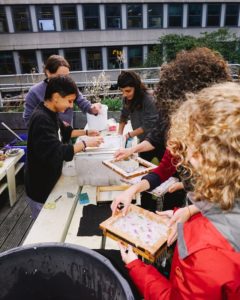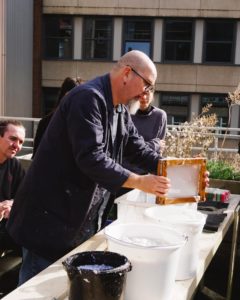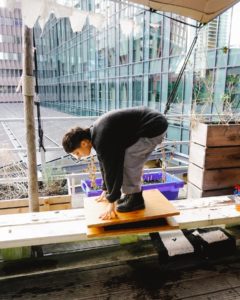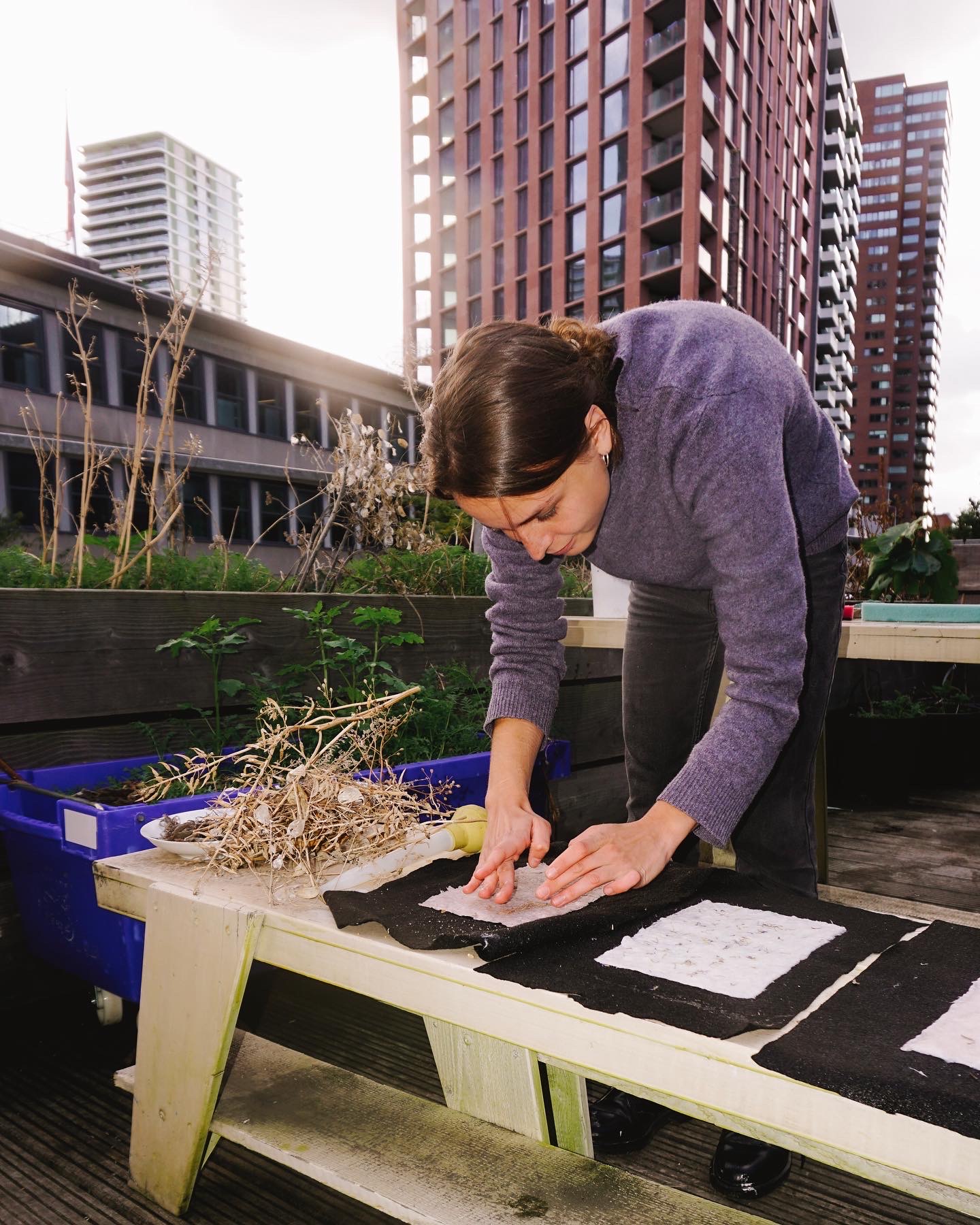- Learn from the Living Library
- News & Events
Paper Making Workshop – Mabon 29 sept 2022
Written by Juliëtte Douet & Julia Wilhelm
7 November 2022
When we came back to the Rooftop Garden after the summer break, we found dried-out skeletons of lavender, sage, and sunflowers in the once thriving beds. Sadly, most of the plants that were growing tall and happy, sprouting flowers, and producing red beet, zucchinis, and pumpkins in June, had died out over the uncommonly dry and hot summer, as nobody had bothered to water and tend to them. Only the succulents were unbothered by the heat and some resistant strawberries, crouching in the shade of taller plants, had magically survived and were spreading their shiny, grooved, dark green leaves over the ground. Luckily, some of the plants had left us pockets filled with seeds.
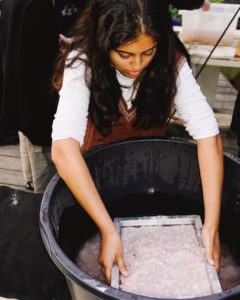
We realized how the university calendar does not attend to the seasonal needs of plants, and we need to think about planting heat-resistant varieties or constructing an elaborate watering system for the coming summer. After the initial shock, we decided to stay with the trouble and organize a paper making workshops using the dried plants and seeds. We teamed up with the Publication Station for our Autumn Equinox Paper Making Workshop on the 29th of September, to inaugurate the new academic year and mourn the plants that didn’t make it through the summer.
The weather was irregular on that Thursday, sunshine and grey clouds were alternating, forcing participants to take on and off their jackets constantly. After everybody poured themselves a cup of tea and had some snacks, Carla and Juliette from the SPIN collective introduced the context of the Rooftop Garden, and invited the students to give a new life to the plants by turning them into paper. As an ice-breaker exercise, Juliette invited everybody to share their names and imitate the plant they felt like at that moment.
On tables one could find buckets filled with water and rests of fabric and paper, as well as a blender, and different kinds of flat sieves. Even though it is possible to make paper from dried plants, it is easier to recycle paper and fabric to integrate pieces of the plants. Wilco from the Publication Station guided us through the paper making process. He explained how paper used to be made from cotton, resulting in a smoother surface and more resilient structure. Nowadays, paper is usually made from the fiber of trees. Through soaking old paper or fabric rests in water, the fibers get separated, and a chewy pulp of fibers mixed with water is left-over. To get the water out of the pulp, a sieve is pulled through the water. The thin layer of fiber from the sieve is then put on a piece of felt, and the excess water gets pushed out. After drying, the isolated fiber will stick together, forming a sheet of paper.
When the paper is still wet, one can add pieces of plants, seeds, or other materials as decoration. Wilco’s explanations were accompanied by the constant hissing of the ventilation, which made it sometimes difficult to understand his words and forced students to lean towards him and listen intently. He showed some examples of different kinds of paper made by students.
In different buckets filled with reddish rainwater that had accumulated in pots on the Rooftop Garden, we dissolved scraps of paper from the trash bunker, newspaper paper, and natural cotton fiber. Students took turn in pulling sieves through the paper mush and decorating their sheets with dried plants. After they felt comfortable with the technique, they got more creative, experimenting with making gradients through using black and white paper pulp, drawing with colored pulp, and blending different kinds of paper.
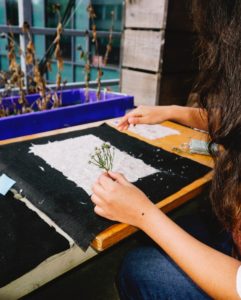
Once finished with their paper creations, the participants layed them out to start the drying process all along the benches and tables on the rooftop. These papers were then stacked on top of each other and placed in a press from the publication station, to squeeze out the water. Some students even took turns standing on this press for more strength. After the participants slowly trickled out of the event, Wilco, Carla and Juliette cleaned up the space and brought all the papers to the publication station to dry and eventually be picked up by their creators the following week.
